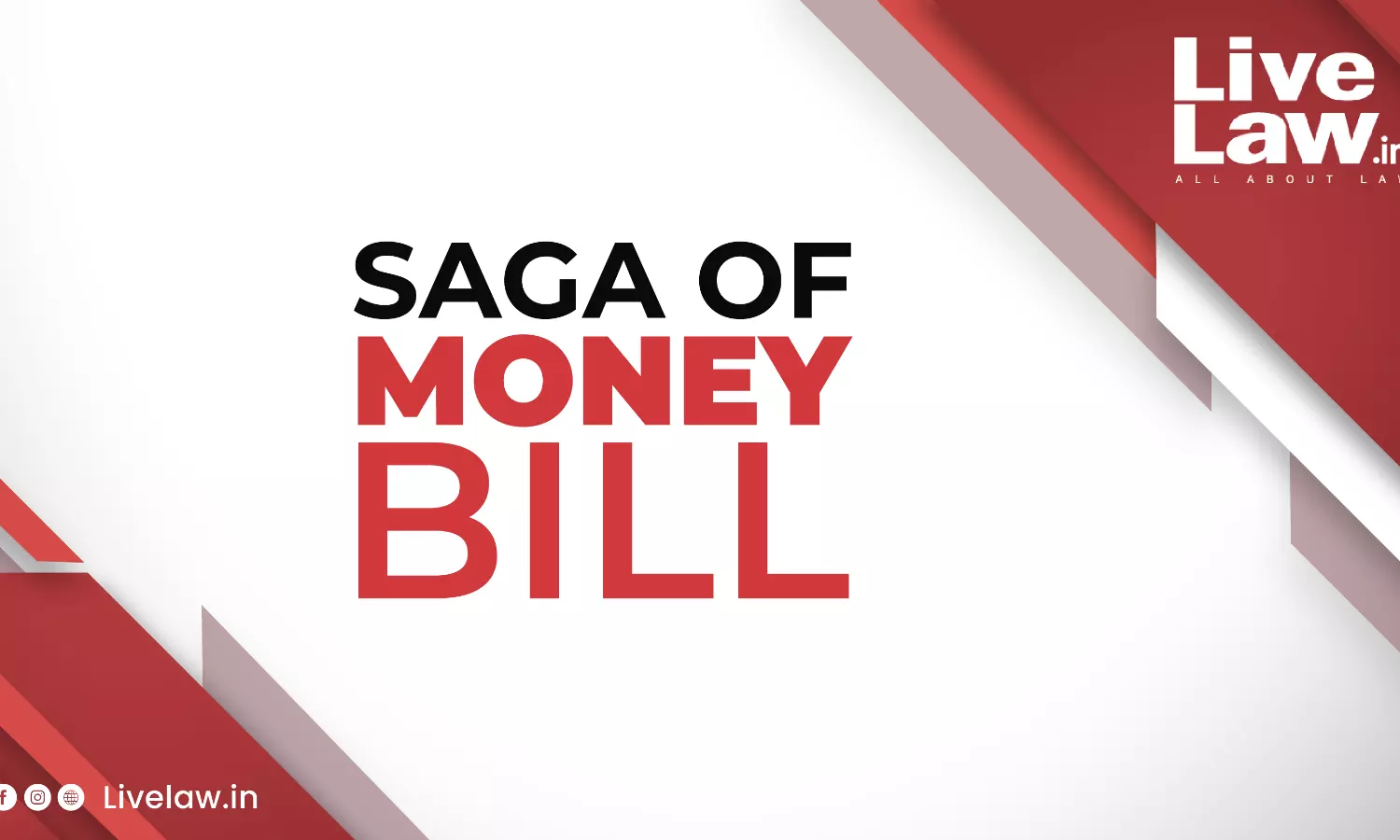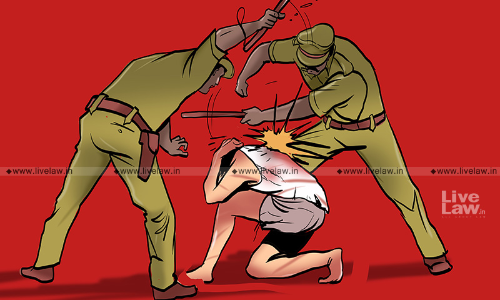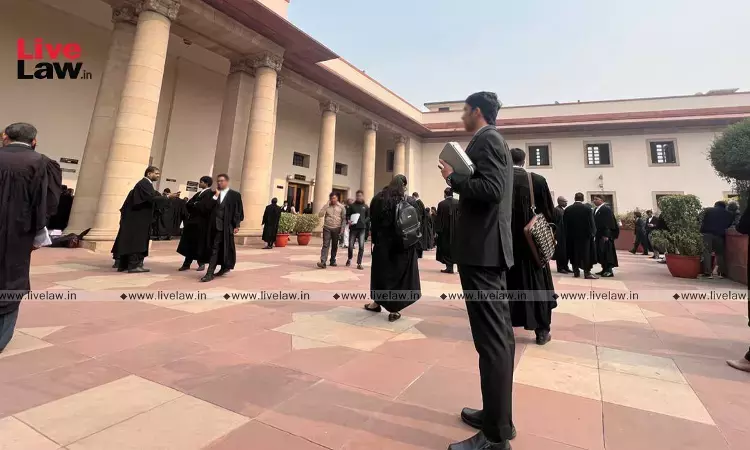
Chief Justice DY Chandrachud recently made an oral remark on the constitution of a 7 judge bench for considering the money bill issue. Its formation is due to the reference made by the constitution bench in Roger Mathew v. South Indian Bank[1] on the interpretation of Article 110(1) of the Constitution of India. The correctness of the majority judgment in Aadhaar case[2] on this point...
Chief Justice DY Chandrachud recently made an oral remark on the constitution of a 7 judge bench for considering the money bill issue. Its formation is due to the reference made by the constitution bench in Roger Mathew v. South Indian Bank[1] on the interpretation of Article 110(1) of the Constitution of India. The correctness of the majority judgment in Aadhaar case[2] on this point was also doubted by the Court. Thereafter in the PMLA case,[3] the question left open for the consideration of larger bench. The decision of the 7 judge bench which is yet to be formed will definitely have a far reaching impact on the constitutional law and the contemporary developments in the Indian parliamentary system and politics.
The Importance of Money Bill
An ordinary bill may introduce in either house of the Parliament and both the houses have to pass the bill with majority of the members present and vote. Similarly in State legislatures which are bicameral, it can be introduced in either house. Money bill is an exception to this general provision which cannot be introduced in the upper house, and upper house can only make some recommendations to the money bill passed by the lower house within a period of fourteen days which the lower house may accept or reject.[4]
The provisions of money bill in the Indian Constitution resemble with the provisions of the Parliament Act, 1911 of England with necessary modifications in which special provisions for money bills were provided to avoid conflict between House of Commons and House of Lords. In the British parliamentary history, such conflicts over financial matters led to financial deadlocks happened in 1670s and 1900s.[5] Adoption of the special provisions of money bill in the Indian Constitution was in this background for avoiding such financial deadlock in the country that may happen due to the skirmishes between the houses which will eventually delay the procedure.
However, the constitutional framers were cautioned while drafting the provisions of money bill, and provided that a money bill should only include the matters expressly provided and not any other matter outside the provision. Article 110 and 199, respectively for Parliament and state legislature, provides these matters as; (a) the imposition, abolition, remission, alteration, or regulation of any tax; (b) the regulation of the borrowing of money or giving of any guarantee by the government of India or the amendment of the law with respect to any financial obligation undertaken by that Government; (c) the custody of the consolidated fund or the contingency fund of India, the payment of money therein or withdrawal of money therefrom; (d) the appropriation of money out the consolidated fund of India, or increasing any such amount; (f) the receipt of money on account of the consolidated fund of India or the Public Account of India, or the custody or issue of such money or the audit of the accounts of India or any state; or (g) any matter incidental to any of the matters specified above. It is clear from the Constitution that a bill to be deemed as money bill, all or any of the above matters should only include in it.
The Controversies on the Money Bills
The fact that money bill requires passing by lower house of the legislature alone and is not affected by the amendments and recommendations suggested by the upper house is being misused as a loophole in the legislative process wherein the government suffers minority in the upper house or apprehends set-backs like rejection or amendments of bills introduced or even serious discussions undesirable for its interest in the upper house. The Aadhaar (Targeted Delivery of Financial and Other Subsidies, Benefits and Service) Act, 2016, the Finance Act, 2017, and the amendments made in the Prevention of Money Laundering Act, 2002 in 2015, 2016, 2018 and 2019 are the recent examples of such abuse of constitutional provisions.
The Aadhaar Act, 2016
The Aadhaar Act, 2016 was introduced as a money bill in the 16th Lok Sabha. The whole structure and provisions of the Act shows that the purpose of the same was to provide for the creation of Aadhaar Number (Unique Identity Number) to individuals and establishing a mechanism for its enrolment, control and supervising, which number can be used for the targeted delivery of services and benefits. It was claimed that the main provision, namely, section 7 provides for the legislative intention of targeted delivery of subsidies, benefits and services the expenditure of which were from the Consolidated Fund and the rest of the provisions are incidental thereto, thus comes within the scope of Art.110(1).
The Finance Act, 2017
The Finance Act, 2017 was also introduced and passed as a money bill in the 16th Lok Sabha. Along with the provisions of a normal finance bill, the Finance Act, 2017 contained some other controversial provisions. It amended the RBI Act, the Representation of the People Act and the Companies Act for the introduction of electoral bond system for the funding of political parties, the SEBI Act for replacing Appellate Tribunal with Securities Appellate Tribunal. It also amended 25 statutes for the purpose of merging of Tribunals and authorities and for service conditions of Chairman and members. These provisions, having an impact upon the democratic functioning and affecting the functioning of quasi- judicial bodies like tribunals and authorities are not related with the matters contained in Article 110(1) of the Constitution.
Amendments in PMLA
The Prevention of Money Laundering Act, 2002 prevents money laundering and provide for the confiscation of property derived from or involved in money laundering. Several amendments were made in PMLA in 2015, 2016, 2018 and 2019 through the Finance Acts of the respective years and they were introduced in the Parliament as money bills.
Danger of the Practice
The introduction and passage of these legislations as money bills is an assault on the constitutional protection of legislative process. The Constitution expressly provided what ought to be the only matters contained in a money bill which these legislations failed to comply with. Since the Speaker of Lok Sabha had certified these bills as money bills, the only requirement for their passing was the majority in the Lok Sabha. It is to be noted that the National Identification Authority of India Bill, 2010 which was the predecessor of the Aadhaar Act was referred to the Standing Committee on Finance of the 15th Lok Sabha due to the deliberations and demands in the Parliament which in turn submitted their report observing the unacceptability of the Bill. Similarly, the amendments made by the Finance Act 2017 have inter alia authorised undisclosed sources of political funding which in turn determine the future of Indian democracy and also interfered with the working of tribunals constituted by various statutes. These abuses pave the way for an unconstitutional precedent by which governments can pass any legislation by giving them an image of money bill which the majority in upper house likely to be opposes. This will also lead to the degradation of concept of a second chamber in the legislature.
Role of Second Chamber in Law Making Process
Role of a second chamber of the legislature in the law making process is long recognised in democratic systems. Mill’s perception about tyranny government was that in a single house system, the majority may lead to despotic and overweening situation and two houses system can avoid such corrupting influence of undivided power.[6] According to Henry Sidgwick, “the significant role of the second chamber is that all legislative measures will get a second consideration from a body which is different in its character from primary representative assembly and if possible supplementary in intellectual qualification.”[7] The law passed by the lower house can be the result of the public pressure or for satisfying their immediate demands, the indirectly elected upper house can act wisely in these situations and can make a recheck over such legislations. During the Constituent Assembly Debates, Gopalaswami Ayyangar strongly defended that the second chamber will help to hold dignified debates which will delay legislations that can be the outcome of hastily perceived decisions. Also the second chamber is the only organ which is capable to act as a check and balance upon the decisions taken by the lower house. Further, the participation of intellectual people who may not be an active Politian in the law making process will eventually leads to unbiased decisions.[8]
Moreover, Rajya Sabha, the second chamber of the Indian Parliament, represents states in India through which it protects the federal structure of the Indian democracy. The voice of the states is raised in Rajya Sabha during legislative process and their concerns about the bill are discussed and resolved there.[9]
Role of Speaker in Certifying Money Bills and the Scope of Judicial Review
The Constitution has given the power to the Speaker of the lower house of Parliament to certify the bills introduced as ‘money bills’. This endorsement as money bill is mandatory for transmitting the bill to the upper house and when it passed, to present before the President or Governor as the case may be. The Constitution also gives finality to this decision of the Speaker on money bill.[10] The moot problems here are two-fold; the possibility of judicial review over Speaker’s certification of money bill and the scope of contents of a money bill.
Judicial response to the question of judicial review of Speaker’s decision on money bills was in negation till recently. The basic premise for this turndown is related with the fundamental doctrine of ‘exclusive jurisdiction of the House over its internal proceedings’ followed by the House of Commons in England and constitutional protection to the internal proceedings of the House under Article 122(1) and 212 (1).
In an earlier case of Mangalore Ganesh Beedi Works v. State of Mysore [11], the increase in sale tax due to the change in coinage system was challenged as the same was not made through a money bill. Though the appeal was dismissed on a different ground, the Supreme Court made an observation,
“Article 212 prohibits the validity of any proceedings in a legislature of a State from being in called in question on the ground of any alleged irregularity of procedure and Article 255 lays down that requirements as to recommendation and previous sanction are to be regarded as matters of procedure only”.
The constitutional validity of an Act introduced and passed as a money bill was challenged in Md. Saeed Siddiqui v. State of Uttar Pradesh[12]. However, the Court relied on the observation in Mangalore Ganesh Beedi and refused to interfere. The same was reiterated in Yogendra Kumar Jaiswal v. State of Bihar[13]
A change in the position was first reflected in the judgments in Aadhaar Case. Though the majority judgment of Justice Sikri, did not answer for the issue of judicial review over speaker’s certification as money bill, in fact, the majority had scrutinised the speaker’s certification and upheld the introduction of Aadhaar Act, 2016 as a money bill. However, the concurrent judgment and the dissenting judgment had specifically answered that judicial review can be exercised over the speaker’s decision on money bill. These views were upheld and thus the issue of scope of judicial review over speaker’s certification as money bill was affirmatively answered by the constitutional bench of Supreme Court in Roger Mathew. The Court emphasized a limited power of judicial review in very extreme instance where there is a complete disregard to the Constitutional scheme is possible. Referring to Raja Ram Pal[14], it was observed that Articles 122(1) and 212(1) gave immunity to the procedural irregularity in parliamentary proceedings only where illegality or unconstitutionality of procedure is open for judicial review.
Another question relevant to the subject lies in the interpretation of Article 110(1), i.e; what constitutes a money bill. Though the letters of Article 110(1) is clear that a money bill contains only those matters come under sub clauses (a) to (f) and the incidental matters thereto, the majority decision in Aadhaar case upheld the introduction of the Aadhaar Act as a money bill considering that the main provision of the Act related with targeted delivery of services and benefits out of the consolidated fund of India, thus comes within the ambit of Article 110 (1) even though the other provisions are unrelated with Article 110 (1). The dissenting judgment by Justice Chandrachud is notable in this regard. It was rightly observed;
“Section 7 does not declare them to be a charge on the Consolidated Fund. It provides that in the case of services, benefits or subsidies which are already charged to the Consolidated Fund, Aadhaar can be made mandatory to avail of them. Section 7, in other words, is a provision for imposing a requirement of authentication and not declaring any expenditure to be a charge on the Consolidated Fund of India.”
Terming the interpretation of Article 110 (1) to include anything incidental to the main provision as an attempt to rewrite the Constitution, Chandrachud J. had rightly declared the introduction of Aadhaar Act as unconstitutional. The correctness of the majority judgments in Aadhaar case on interpreting Article 110(1) was doubted by the constitutional bench in Roger Mathew. Thus the Court has referred the question of interpretation of Article 110(1) to a larger bench of 7 judges. In Vijay Madanlal Choudhary v. Union of India, wherein the PMLA Act was challenged, the contention that PMLA amendments were in violation of Article 110 was untouched by the Court as it is pending for the consideration of the larger bench.
In India, legislations are not just the will of the majority. The framers of the Constitution wanted qualitative deliberations and discussions in the law making process. By establishing a bicameral legislature, the Constitution had fulfilled the need for a second chamber which consists of members representing states in India and neutral persons from the different fields. To a certain extent, the legislative scrutiny by the second chamber is effective and the amendments and suggestions put forth by the upper house in legislative process is mostly valuable. It can prevent governments with ample majority in the lower house to legislate according to their whims and fancies. However, the attempts to introduce important bills by giving them a colour of money bill thereby superseding Rajya Sabha and its suggestions is against the spirit of the Constitution. Though the judiciary has a limited role in the parliamentary process, it is high time to interfere with such unconstitutional practices by giving a narrow interpretation to the provisions related to money bills. For these reasons, the decision of the 7 judge bench to be formed is much awaited. The office of the Speaker shall also be cautioned and careful while certifying money bills otherwise majority in the lower house can simply replace the existing constitutional safeguards of legislative process.
Nirun R.N. is a Research Scholar at Central University of Kerala and Anu Stephen is a practicing Advocate in Kottayam. The original form of the article is included in the book “State, Civil Society and Human Rights” published by Department of Law, Central University of Kerala. Views are personal.
[1] (2020) 3 SCC 637
[2] K.S. Puttuswamy v. Union of India, (2019) 1 SCC 1
[3] Vijay Madanlal Choudhary v. Union of India, 2022 SCC Online SC 929
[4] Constitution of India, Art.109 & 198.
[5] Pratik Datta et.al, Judicial Review and Money Bill, 10 (2) NUJS L.REV. 75,79-86 (2017)
[6] Duff Spafford, Mill’s Majority Principle, 18 (3) CANADIAN JOURNAL OF POLITICAL SCIENCE 599 (1985)
[7] Apurba Lal Mazumdar, Neither Mischievous Nor Superfluous in SECOND CHAMBER; ITS ROLE IN
MODERN LEGISLATURES 148,149 (S.S BHALERAO ed., 1977)
[8] Constitutional Assembly Debates, Book 1, 28 July 1947.
[9] See, SITA SRIVASTAVA, CONSTITUTION AND FUNCTIONING OF RAJYASABHA (1st ed. 1977).
[10] Constitution of India, Art.110(3) &199(3)
[11] 1963 Supp (1) SCR 275
[12] (2014)11 SCC 415
[13] (2016) 3 SCC 183
[14] Raja Ram Pal v. Speaker, Lok Sabha (2007) 3 SCC 184




